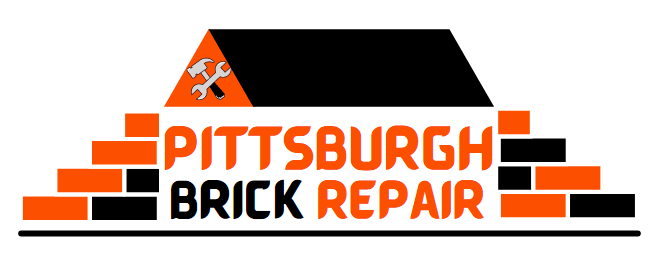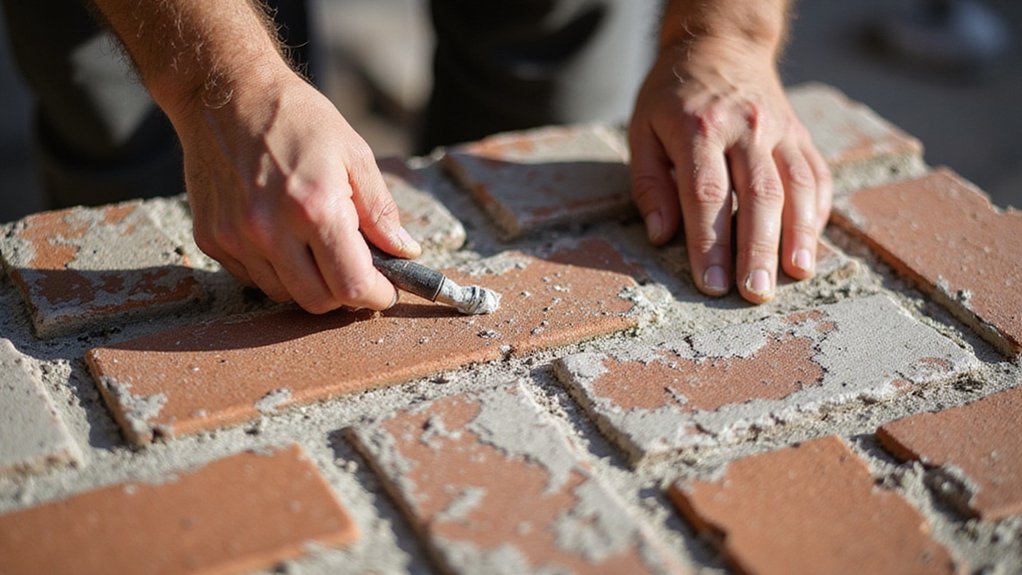If you’ve noticed crumbling mortar and worried about your brick wall’s stability, you’re not alone. Tuckpointing is an essential repair technique that can save your masonry from further damage. It’s more than just cosmetic—it’s about protecting your investment and preventing costly structural issues. Want to understand how this process can breathe new life into your aging brickwork and keep your home standing strong? Let’s reveal the secrets of effective tuckpointing.
The Basics of Tuckpointing
Brick walls, like time-worn storytellers, often reveal their age through weathered mortar joints. Tuckpointing is a pivotal maintenance technique that restores these joints, preserving your brick structure’s integrity and appearance. Freeze-thaw damage prevention becomes critical in protecting masonry structures from winter’s harsh conditions.
You’ll want to understand its core elements: mortar composition and brick durability. When mortar deteriorates, it compromises your wall’s strength and allows moisture intrusion. Professional tuckpointing involves carefully removing old, damaged mortar and replacing it with fresh, matching material.
This process not only bolsters your structure’s aesthetic appeal but also prevents potential structural damage. By investing in tuckpointing, you’re protecting your property’s value and ensuring its long-term resilience.
Signs Your Masonry Needs Tuckpointing
How can you tell if your masonry is crying out for professional attention? Cracked mortar and deteriorating joints are clear warning signs that your brick walls need tuckpointing.
You’ll notice horizontal or zigzag cracks spreading across your mortar lines, which indicate serious structural stress. Weathered, crumbling mortar that easily falls away when touched suggests immediate repair is necessary.
If you’re seeing gaps between bricks or experiencing water seepage through your walls, these are red flags that your masonry’s integrity is compromised and professional intervention is essential. When these issues arise, chimney repair services in Pittsburgh can provide expert tuckpointing and masonry restoration to protect your home’s structural integrity.
Tools and Materials Required
When tackling a tuckpointing project, you’ll need a specific set of tools and materials to guarantee a professional-grade repair. Specialized tuckpointing tools like a cold chisel, pointing trowel, and masonry hammer are essential for precise work. You’ll also want safety gear, including protective goggles and heavy-duty gloves.
Proper mortar composition is critical, so choose a mix that matches your existing mortar’s color and strength. Quality materials make all the difference between a temporary fix and a long-lasting restoration. Remember, investing in the right tools now can save you significant time and money in future repairs.
Step-by-Step Tuckpointing Process
Precision and patience are the cornerstones of successful tuckpointing, a scrupulous masonry repair technique that can breathe new life into aging brick walls. You’ll want to start with proper joint preparation, carefully removing deteriorated mortar using a hammer and chisel or grinder.
Next, thoroughly clean the joints, ensuring they’re free from dust and debris. Select an appropriate mortar mix that matches your wall’s original color and composition. Apply the new mortar carefully, using specialized tools to create clean, precise lines that restore your wall’s structural integrity and aesthetic appeal.
Common Mistakes to Avoid
Why do so many homeowners inadvertently sabotage their tuckpointing projects? Often, it’s due to common mistakes that can jeopardize your brick wall’s integrity and appearance.
Here are four critical errors to avoid:
- Incorrect mortar application that doesn’t match the original wall’s composition
- Poor preparation techniques leading to uneven surfaces
- Using the wrong tools or mixed-quality materials
- Neglecting moisture and weather considerations during repair
These missteps can alter a potential restoration into an expensive, frustrating repair. By understanding and avoiding these pitfalls, you’ll guarantee a professional-looking, long-lasting tuckpointing result that protects your home’s structural beauty.
Benefits of Professional Tuckpointing
Although DIY tuckpointing might seem tempting, professional services offer significant advantages that can save you time, money, and potential structural headaches. Experts bring specialized skills that guarantee increased structural stability for your brick walls.
They’ll carefully remove damaged mortar, select perfect matching materials, and apply precise techniques that safeguard your home’s integrity. Professional tuckpointing also provides amplified aesthetic appeal, making your property look well-maintained and structurally sound.
Their trained eye catches issues you might miss, preventing costly repairs down the line and preserving your building’s long-term value.
Cost Considerations and Budgeting
When budgeting for tuckpointing, homeowners can quickly get overwhelmed by the range of potential costs involved. Your cost estimation will depend on several critical factors that impact your overall budget allocation.
Key considerations include:
- Size of the area needing repair
- Complexity of the masonry work
- Materials required for restoration
- Labor rates in your specific region
Understanding these elements helps you plan more effectively and avoid unexpected expenses. By getting multiple professional quotes and comparing prices, you’ll feel more confident in your investment. Remember, quality tuckpointing isn’t just an expense—it’s protecting your home’s long-term structural integrity.
Maintenance Tips for Tuckpointed Walls
Regular maintenance of tuckpointed walls can substantially extend their lifespan and preserve your home’s aesthetic appeal. You’ll want to inspect your walls annually for signs of deterioration, focusing on weather sealing methods that protect against moisture intrusion. Look for small cracks, loose mortar, or areas where water might collect.
Clean the surface gently with soft brushes and mild detergents to prevent buildup that could jeopardize the tuckpointing. Consider professional aesthetic improvements every few years to sustain the wall’s wholeness and appearance. By staying proactive, you’ll safeguard your walls remain strong and visually appealing for years to come.
Frequently Asked Questions
How Long Does Tuckpointing Typically Last Before Needing Repair Again?
You’ll typically see 25-30 years of durability with professional tuckpointing, though seasonal changes and local climate can impact long-term maintenance needs for your home’s masonry integrity.
Can Homeowners Do Tuckpointing Themselves or Is Professional Help Mandatory?
You can attempt DIY tuckpointing, but it’s complex. Professional tuckpointing direction is essential for precision and effectiveness, ensuring your home’s masonry integrity remains strong and visually appealing.
Will Tuckpointing Increase My Home’s Overall Market Value?
You’ll increase your home’s property value appreciation by investing in tuckpointing, which augments home resale attractiveness and signals to potential buyers that you’ve carefully maintained your property’s structural integrity.
Does Tuckpointing Work on All Types of Brick and Stone Walls?
You’ll find tuckpointing works well with most brick and natural stone materials, especially in historic building styles. However, some delicate or deteriorated surfaces might require specialized restoration techniques.
How Disruptive Is the Tuckpointing Process to Daily Household Activities?
You’ll experience moderate interference during tuckpointing. Expect significant noise levels and dust management challenges that’ll require temporary relocation of prized possessions and careful home preparation to minimize household impact.

